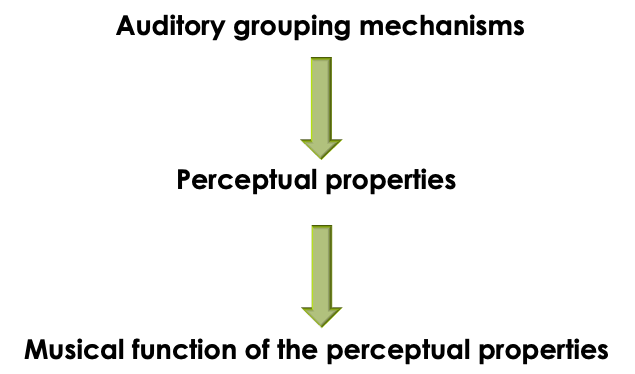Auditory Grouping Mechanisms | TOGE Ex. 1
All Examples
Auditory grouping gives rise to events from which perceptual properties are extracted, which then acquire musical functions within a given sonic context
Auditory grouping processes and the resulting perceptual qualities and corresponding orchestral effects. [Adapted from Goodchild and McAdams 2021, Fig. 1]
Timbral augmentation (sustained, stable): Debussy, La Mer, i, mm. 122–31
Timbral augmentation (sustained, transforming): Overture, mm. 20–25. Timestamp: 2:03
Timbral augmentation (punctuated): Sibelius, Symphony no. 5, op. 82, iii, mm. 474–482
Timbral emergence (sustained, transforming): Schoenberg, Five Pieces for Orchestra op. 16, iii, mm. 1–11
Sectional boundaries: Dolan’s (2013b) orchestral graph of Haydn, Symphony no. 100, ii. Colors represent different instruments and the line thickness corresponds to notated dynamics.









